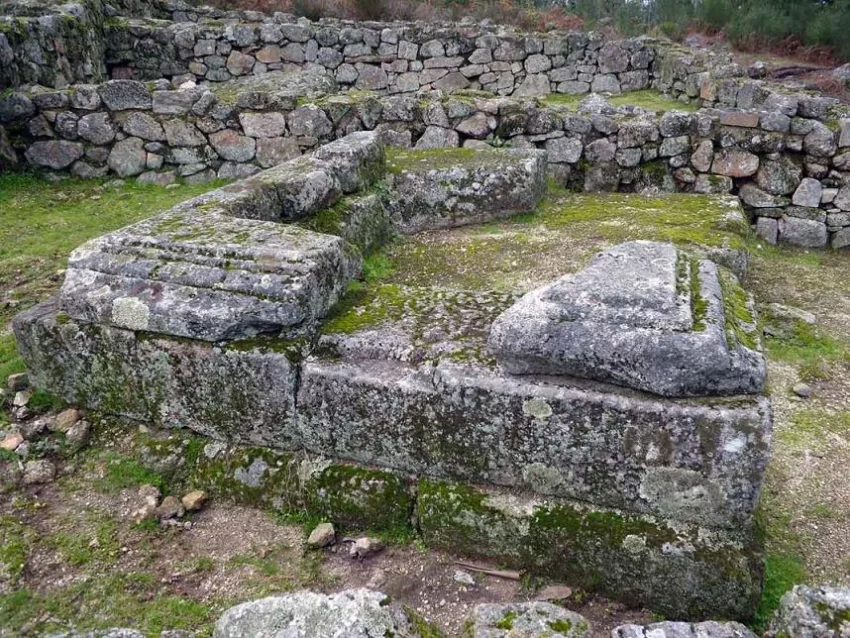The Castro of Monte Mozinho is a significant archaeological site in northern Portugal. It represents the remains of a hillfort settlement, known as a ‘castro,’ which dates back to the Iron Age and Roman periods. This site offers a window into the ancient past of the Iberian Peninsula, showcasing the complex history of human occupation, cultural interchange, and architectural development in the region.
Get your dose of History via Email
Historical Background of Castro of Monte Mozinho
Archaeologists discovered the Castro of Monte Mozinho in the late 19th century. Francisco Martins Sarmento, a pioneering Portuguese archaeologist, first identified it. The site was built by the indigenous peoples of the region, known as the Gallaeci. They inhabited it from the 4th century BC until the 1st century AD. Later, the Romans occupied the site, leaving behind a rich layer of historical interaction.
The Gallaeci constructed the castro as a fortified settlement, which served as a hub for their community. The Romans, who later took control of the region, left their mark on the site. They introduced new construction techniques and architectural styles. The castro was a bustling center of activity during its peak. It was a place of trade, cultural exchange, and defense against invaders.
Monte Mozinho was not just a single event’s backdrop. It was a living community that evolved over centuries. The site witnessed the transition from the pre-Roman to the Roman era. It saw the integration of Roman customs and practices into the local Gallaeci culture. This blend of cultures is evident in the archaeological remains.
After the Roman occupation, the site was eventually abandoned. The reasons for this abandonment are still a subject of research. However, it is clear that Monte Mozinho was once a significant settlement in the region. It played a crucial role in the local economy and defense strategies.
The site’s discovery and subsequent excavations have provided valuable insights into the ancient history of Portugal. They have shed light on the complex interactions between indigenous cultures and Roman influences. Monte Mozinho stands as a testament to the region’s rich historical tapestry.
About Castro of Monte Mozinho
The Castro of Monte Mozinho is an impressive architectural feat. It spans over 40 hectares, making it one of the largest hillfort settlements in the Iberian Peninsula. The site features a complex network of stone walls, houses, and public buildings. These structures reflect the organizational skills of its inhabitants.
The construction of the castro relied heavily on local materials. Granite stones were the primary building blocks. The inhabitants arranged them skillfully without the use of mortar. The settlement’s layout includes multiple defensive walls, which provided protection against invasions.
Architectural highlights of the site include the remnants of round and rectangular houses. These structures often had central hearths. Public buildings such as bathhouses and communal spaces also feature prominently. They illustrate the Roman influence on the indigenous architectural style.
Excavations have uncovered intricate details of the settlement’s design. Streets and alleys were carefully planned. Water drainage systems were advanced for their time. These features demonstrate a high level of urban planning and civil engineering.
The Castro of Monte Mozinho is not only a marvel of ancient construction techniques. It is also a cultural landmark. It provides a tangible connection to the past. The site allows us to glimpse the daily lives of its ancient inhabitants.
Theories and Interpretations
Several theories surround the Castro of Monte Mozinho. Its purpose and the extent of Roman influence are central to these discussions. Some scholars suggest it was a strategic military outpost. Others believe it was a center of trade and cultural exchange.
The mysteries of the site are numerous. For instance, the exact social structure of the inhabitants remains unclear. The presence of luxury items, such as imported ceramics, indicates a complex society with varying social statuses.
Interpretations of the site have had to rely on matching archaeological findings with historical records. This process is challenging due to the scarcity of written sources from the period. Therefore, much of what we know about Monte Mozinho comes from the artifacts and structures themselves.
Dating the site has involved various methods. These include typological analysis of ceramics and radiocarbon dating. These techniques have helped establish a timeline for the occupation and development of the castro.
The Castro of Monte Mozinho continues to be a subject of academic interest. Ongoing research aims to unravel its secrets. The site remains an important piece in the puzzle of Portugal’s ancient history.
At a glance
Country: Portugal
Civilization: Gallaeci and Romans
Age: 4th century BC to 1st century AD

